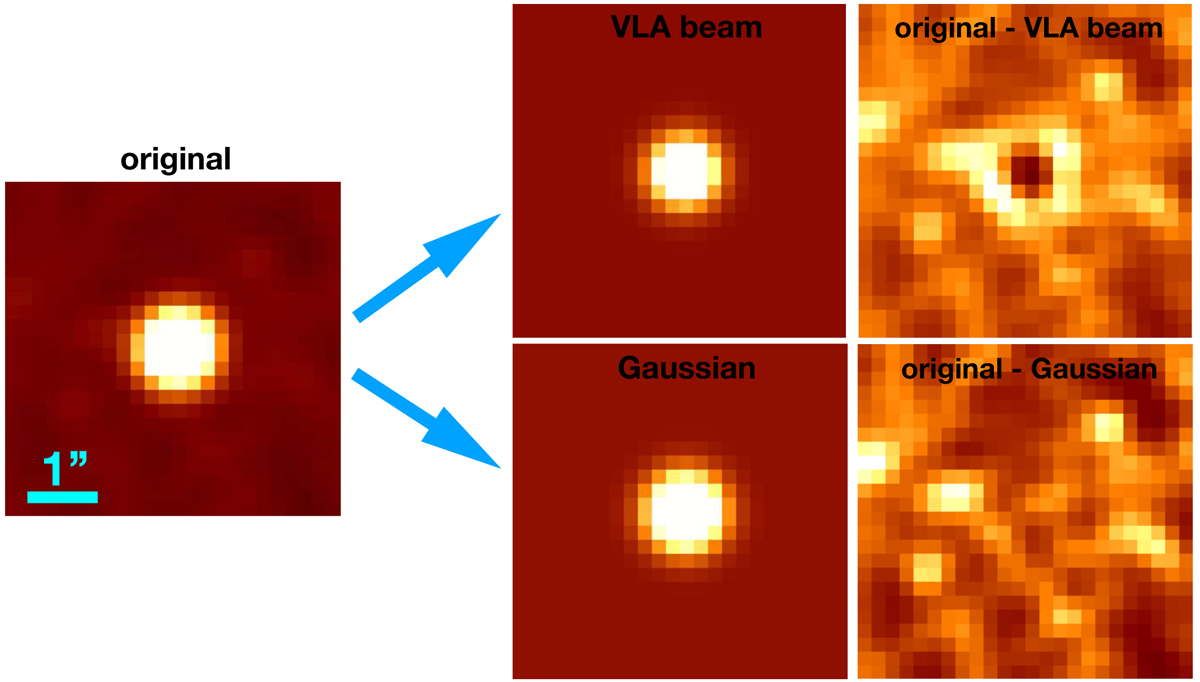Fig. 2.

GALFIT fitting of the radio VLA image (3 GHz) of the galaxy ID 685067 (z = 0.37) with the VLA synthesized beam in the upper row and with a Gaussian profile (convolved with the beam) in the bottom row. In horizontal sequence are shown, from left to right, the original image, the fitted model and the residual (original-model). For this galaxy, we derive an angular size of 0.20 ± 0.04″ (the pixel scale is 0.2″ pixel−1), which corresponds to a physical size of 1.06 ± 0.19 kpc. We notice that here GALFIT converges when fixing the position angle (PA) and axis ratio (q) parameters, to 0 and 1, respectively (Table A.1). This example illustrates the possibility to reliably measure the radio sizes of our objects even when they are smaller than the FWHM resolution of VLA (0.75″). In this case, the difference between the two models is recognized by looking at the residual images (i.e., original-model).
Current usage metrics show cumulative count of Article Views (full-text article views including HTML views, PDF and ePub downloads, according to the available data) and Abstracts Views on Vision4Press platform.
Data correspond to usage on the plateform after 2015. The current usage metrics is available 48-96 hours after online publication and is updated daily on week days.
Initial download of the metrics may take a while.


